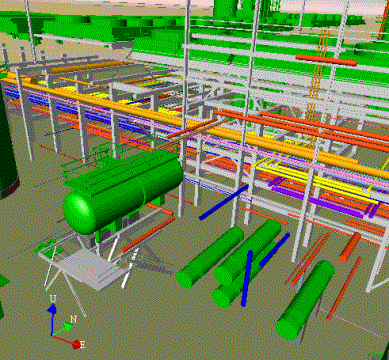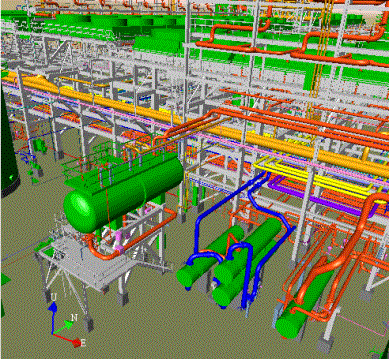Customizing Viewer Performance
V-Suite CORE has the ability to display large projects. When working with large projects it is important to understand how V-Suite CORE displays assets and how it can be customized to optimize the performance of the viewer.
The display of Assets will be performed in distinct phases
- retrieving Asset information
- rendering graphics
Asset retrieval
The "Asset retrieval phase" will occur every time you request V-Suite CORE to display Assets. In this phase, V-Suite CORE will retrieve information from the database and will organize the Assets for display. The progress of this phase is displayed in the status bar but because V-Suite CORE cannot exactly predict when it is completed it will display a "busy" progress bar.

The Asset retrieval phase can interrupted by hitting ESCAPE. The time needed to retrieve and organize the Asset information usually doesn't exceed a few seconds but highly depends on factors like network speed and server performance in the case of a network database and client computer performance for a local database.
Rendering Graphics
Once V-Suite CORE has obtained and organized the Asset information it will render the graphics. Rendering essentially means "drawing" the graphics on screen. As you navigate, V-Suite CORE calculates which objects to render first based the object's size on the screen and will refresh the screen based on the frame rate. The frame rate is customizable in the User Options and is by default set to a fixed frame rate. Objects which V-Suite CORE does not have time to render within the frame are hidden or not shown. The percentage of graphics that have been rendered for the current view point is displayed in the status bar;

When you change the viewpoint, more or fewer Assets need to be rendered, therefore the percentage rendered will change. Objects which were hidden or not shown are rendered when navigation stops. The amount and type of objects that are not displayed depends on your hardware performance (graphics card/driver), the number of objects visible from the current viewpoint and the frame rate. The higher you set your fixed frame rate the more objects will not be displayed. You can switch off the frame rate but that means V-Suite CORE will only refresh the screen when all visible objects are rendered.
The user has changed the view point; the viewer will render the graphics displaying large Assets first;

The viewer has rendered all graphics for the current view point;

V-Suite CORE will also not display objects which are too small to see or outside the field of view. The amount of small objects that are not displayed depends on the Small Object Culling threshold which can be customized in the user Options.
